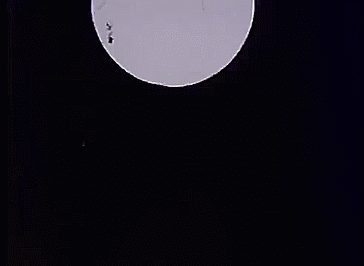
‘The experimental animator Robert Breer made more than 40 highly inventive films in a career spanning some 50 years. His oeuvre combined abstraction, subversive collage, figurative work and simple mark-making, and took in a broad range of influences and reference points, including painting, kinetic art, early cinema and cartoons.
‘Breer was considered by some to be an anti-animator, as he often worked against the processes with which the craft is ordinarily associated. He explored movement between frames and within, and teased apart the lines between motion and stasis, working skilfully, sensitively and humorously, with variations in speed and repetition. In films such as Swiss Army Knife With Rats and Pigeons (1980), he combined many different styles of animation, as well as live action. Breer took a considered yet light-of-touch approach to his films, infusing them with life and spontaneity. These qualities contributed to their positive reception both in and outside his native US.
‘He was born in Detroit. His father, Carl, was the chief engineer at the Chrysler company and in 1934 designed the Chrysler Airflow car. Robert studied engineering at Stanford University, California, but later reverted to art. His father was something of a mad inventor who adapted the family’s 16mm Bolex camera for 3D purposes. This would influence Breer’s own “What the hell will this look like?” (as he once put it) method of film-making.
‘His first significant forays in art came when he joined the army in the 1940s. He painted educational posters on subjects such as the dangers of syphilis and then, using a form of army bursary, travelled to Paris, where he studied the avant garde. He took to painting in the hard-edged, geometric, abstract style associated with Piet Mondrian and developed a relationship with the renowned Galerie Denise René, where he exhibited and later co-organised the group exhibition Le Mouvement in 1955.
‘The dynamic and abstract animated films of Hans Richter, Viking Eggeling, Walter Ruttmann and Fernand Léger addressed Breer’s frustrations with the stasis and rigidity of painting. Still thinking as a painter, as he always would, he shot his first film, Form Phases I, in 1952. For this, Breer painted a set of index cards and then photographed them sequentially, one-by-one, using a 16mm camera. The resulting film engaged the viewer directly in their perception of movement and space, demanding that they find their own way through the barrage of images presented.
‘His subsequent films refined this process, but formal abstract experimentation was not to remain a preoccupation. Un Miracle (1954) – a collaboration with Pontus Hultén, the Swedish curator who later became the director of the Pompidou Centre – presented a cutout of Pope Pius XII juggling with his own head. Eyewash (1959) used still photography, flash frames, stop motion and live action to generate feelings of gravity, surface and depth.
‘Returning to the US, Breer bridged the avant-garde movement in Europe and the new experimental, counter-cultural scene developing in the US, later known as New American Cinema. He was one of several film-makers who, at the invitation of Jonas Mekas, were founding members of the New York Film-Makers’ Cooperative in 1962. The organisation went on to influence the distribution and exhibition of experimental films all around the world.
‘Breer collaborated with the sculptor Claes Oldenburg on the live-action film Pat’s Birthday in 1962, and in 1970 he was invited to exhibit at Expo 70 in Osaka, Japan, alongside others from Experiments in Art and Technology, an organisation that pioneered collaborations between artists and engineers. There, he presented his Floats: large, movable sculptures that he called “motorised molluscs”. Like his films, they had a playful, unpredictable quality; he revived them in the 1990s.
‘In Japan, Breer experimented with rotoscoping, an animation technique based around the tracing of live-action movement. Using it, he created Fuji (1974), a mesmerising account of a train journey past the titular mountain, featuring realistic depictions of his wife, the train’s ticket seller, abstract sections and drawings of the mountain. In 2002, Fuji was one of 25 films – including Alien (1979) and Boyz N the Hood (1991) – to be added to the US Library of Congress National Film Registry, which recognises culturally, historically or aesthetically significant films.’ — William Fowler
____
Stills
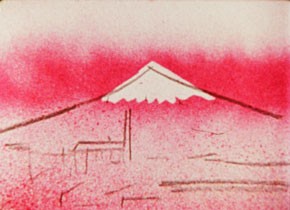
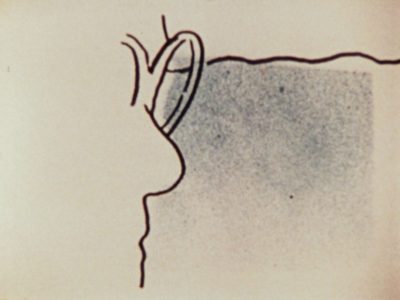
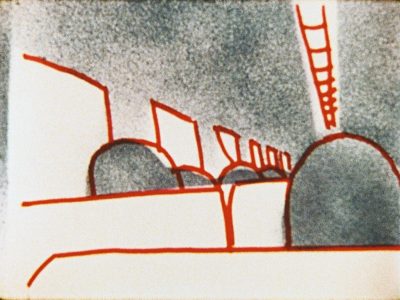
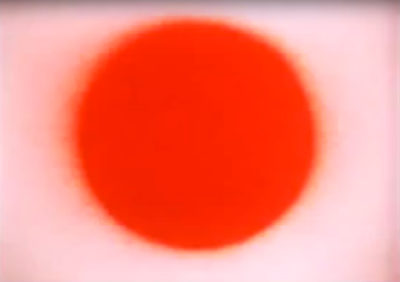

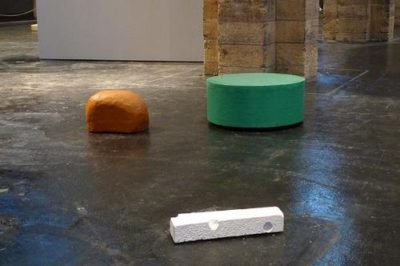

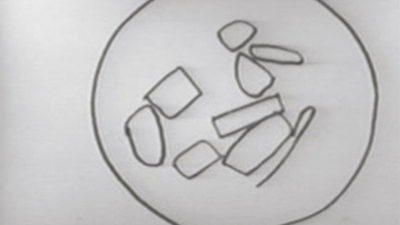

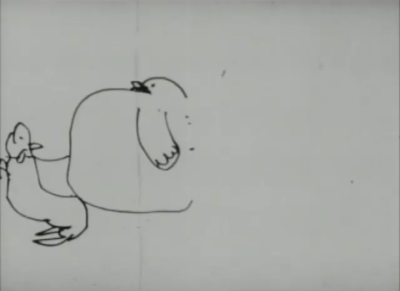
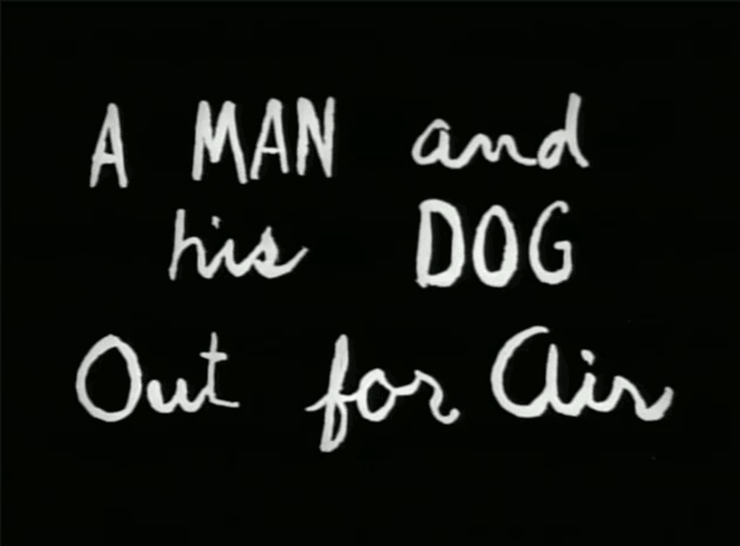


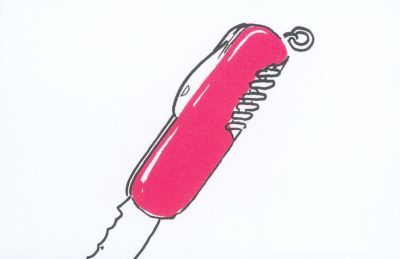


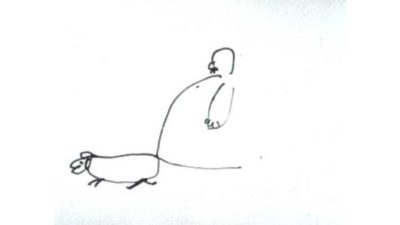







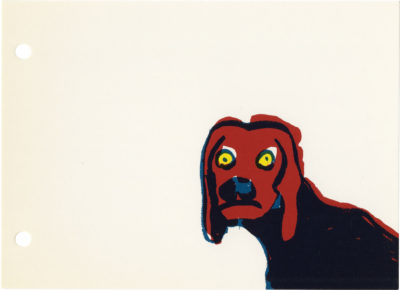
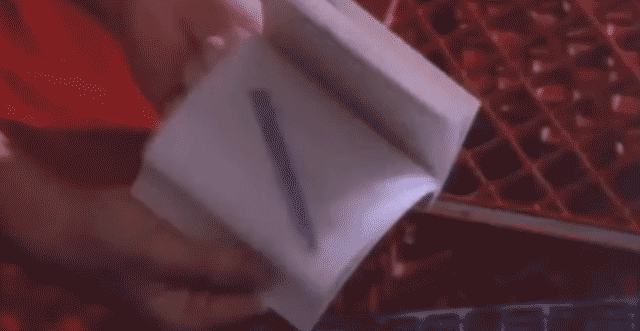
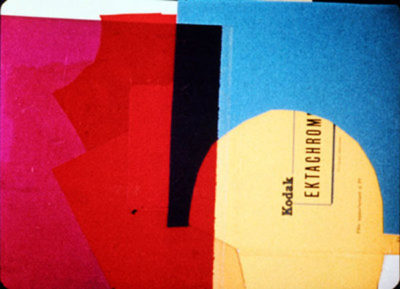

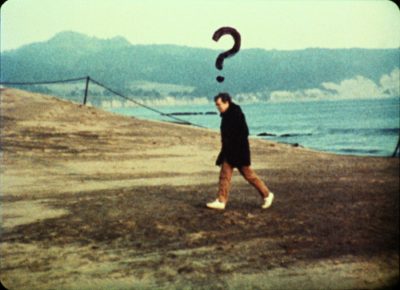
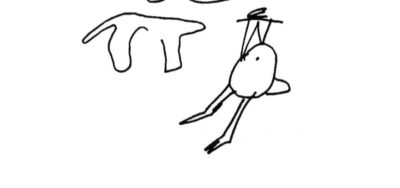
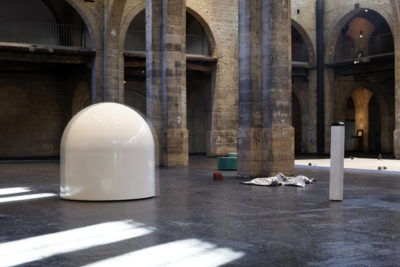
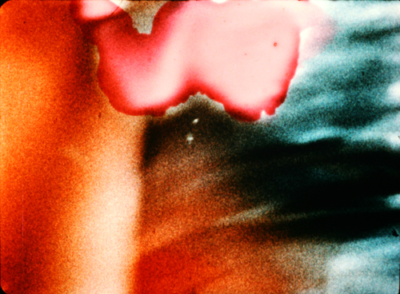

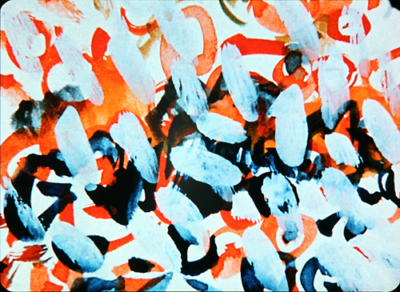

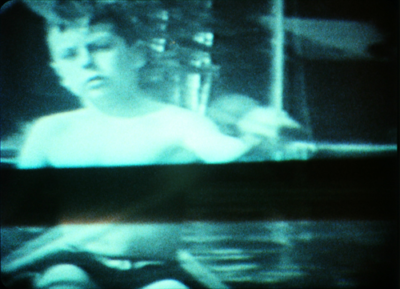
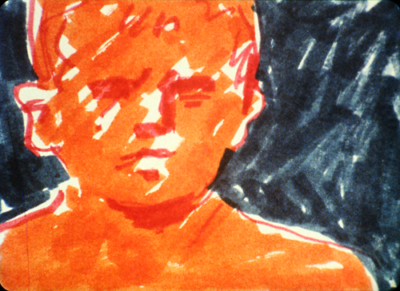
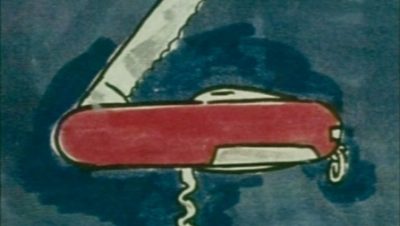
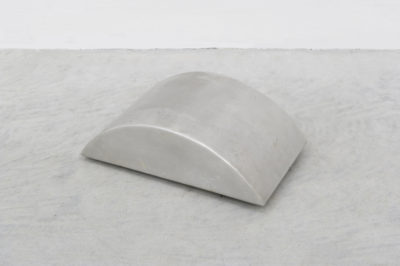
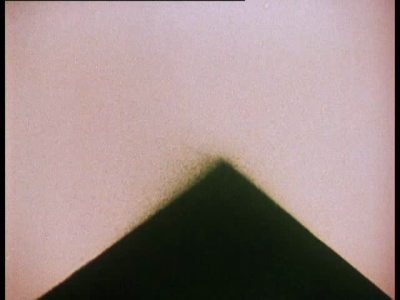

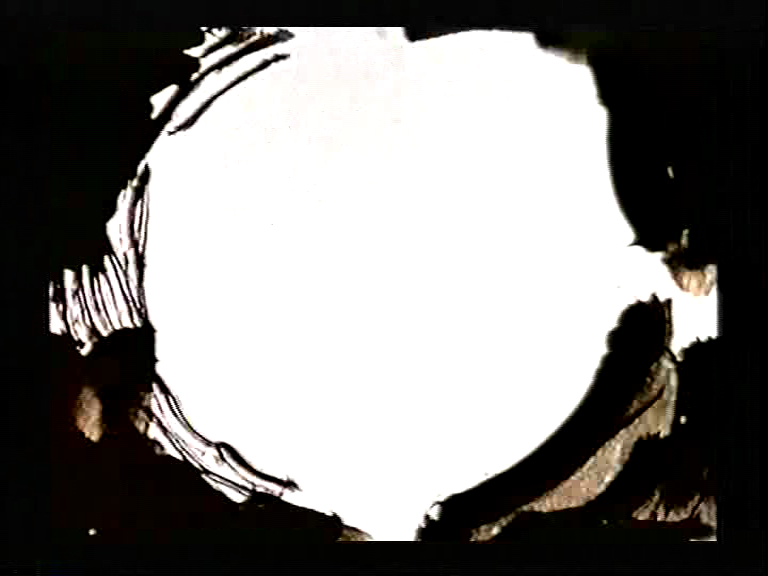

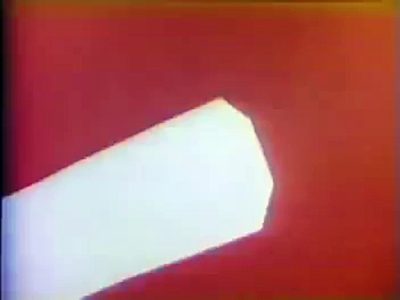
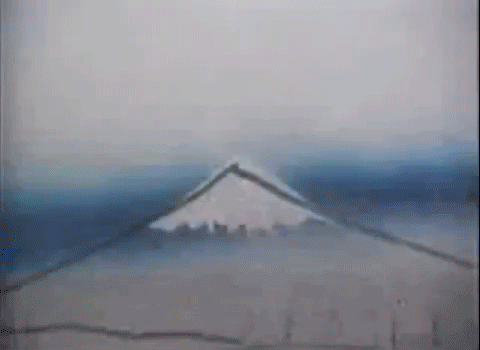
___
Further
Robert Breer: Animator
Robert Breer @ IMDb
Robert Breer @ Light Cone
Interview with Robert Breer @ UBUWEB
ATOZ (DVD)
Video: Robert Breer t-shirts
Video: ‘Robert Breer’, un film de Pip Chodorov
Robert Breer and BigMinis
Robert Breer is perhaps best known …
Robert Breer @ RE:VOIR
DVD: Robert Breer A-Z box set
EVERYTHING GOES: AN INTERVIEW WITH ROBERT BREER
Robert Breer, Kinetic Poet of the Avant-Garde
Oral history interview with Robert Breer, 1973 July 10
Robert Breer, by Claes Oldenburg
Morsel: Robert Breer’s Floating Gumdrop
Robert Breer: Single-frame Aesthetics and Inherited Modernisms in Relation to the Neo-avant-garde
Illusions of Depth and Motion in Robert Breer’s Fuji (1974)
Robert Breer obit @ MUBI
Eye Washes: ROBERT BREER, 1926–2011
In Memory Of Avant-Garde Animator Robert Breer
William Wegman and Robert Breer’s New Wave
Visual Music after Cage: Robert Breer, expanded cinema and Stockhausen’s Originals (1964)
Float on: Robert Breer, RIP
Robert Breer [from FILM: THE FRONT LINE 1983]
Robert Breer: Master of the 4 inch x 6 inch
___
Extras
Screening Room with Robert Breer – PREVIEW
Robert Breer Retrospective at Museum Tinguely
Robert Breer at home in Tarrytown, NY, 2008
_____
Interview

yann beauvais : How did you come to film? I’ve read what you’ve said about it. You seem to have gone from painting to film and then from film to sculpture and I would like to explore that movement and to understand it, in some ways.
Robert Breer : Well, the first film I made was in 1952 and it’s a brief animated film (called “Form Phases”). Very strange. I did’nt make it in France, I made it in America on a visit back there because my father had a camera which I could use. I had been living in Paris since 1949 and I was a painter at Gallery Denise René, practising neo-plastic orthodoxy that was considered avant-garde at that time. My interest in film then was marginal. In that neo-plastic period, one made “absolute” paintings. It was “art concret”. So I made about one “absolute” painting every week, and it occurred to me that there was a contradiction in being able to make so many absolutes. So I thought that maybe the interest was, for me, in arriving at the absolute rather than being there. So I thought maybe the process was more interesting than the product.
yb: Is it from the idea of process that you went to films?
RB : Process is a word that become used later and differently and I, of course, didn’t use that word then thinking about it but that was the idea. So I made a Flipbook of small paintings to try to understand how I arrived at making this final painting. I was working in very simple geometric forms, hard edge, conventional, you know more or less conventional neo-plasticism. So, this first Flipbook then became the basis for a film on my next visit to America, which was that year 52 and yet I didn’t really use those original images. I had to invent my own system because I had no training in filmmaking at all and certainly none in animation. I only knew that I had to do one frame at a time. I Had to invent the method. I rented a slide projector that would project big slides (3”x4”) that you could draw on and I bought packages of transparencies – I could have made my own actually. Anyhow I cut out forms very carefully in transparent self-adhering cellophane and made images which I then projected onto a screen. With a 16mm camera next to the projector, I then filmed them one frame at a time. It was an awkward process. Then, I tried some other totally different frame by frame and some continuous shooting with ink in the water and so on. I was then just playing with film for the little while that I had a camera. So those were my first experiments. I, of course, very quickly got interested in film itself as opposed to film as an analytical tool. I got interested in film’s potential for synthesis and continued to make films, borrowing the camera from my father. He was making three dimensional movies by that time. In the ‘40s he was making home-movies in 3D, with a twin camera which he had invented. As an inventor it was easy for him… and quite natural then for me to try to make films, even without any formal training. I was very suspicious of the books on animation which were too infantile for me to be interested in, except for some of the techniques I guess. Usually I didn’t like to look at them. I wanted to invent my own system anyway.
Yb: From painting to film you were reaching stuff not obvious in painting which is time, which is not really within the painting : time an rhythm.
RB : Well, by 1955 I continued to paint and I began to introduce elements in the paintings which broke with the neo-plastic orthodoxy, because usually what we were working with then were forms which were locked to one another and it was some sort of religious heresy to have a form which floated free. It was considered a weakness in a painting if there was any suggestion of elastic space. Usually, the space had to be very concrete, very tied down to the frame, tied one to another and so forth. In my case, I introduced a floating line, quite deliberately. I don’t pretend that it was great aesthetic breakthrough because in a sense it was going backwards in terms of pure plastic …
Yb : Was it a bit like some Kandinsky?
RB : It could be Kandinsky with cosmic space suggested and so forth. I, wasn’t interested in doing that. I, of course, didn’t want to repeat Kandinsky. The point was that my films did affect my paintings and finally by 1958 I quit painting altogether. The films went on from painting… from looking like my paintings to suddenly going in various directions and of course, the most radical one was, the little film I did before “recreation” which was very similar to “recreation”, it got destroyed because it was a loop and wore itself out. Anyhow, the principle was there. The earlier “Form Phase” owed something to earlier experimental cinema; Hans Richter and Eggeling in the formal use of space. I must have been influenced by Richter…
Yb: But had you seen those films at that time?
RB : Well, I can’t remember but it’s just too obvious in “Form Phases 4” that by that time I had. By 1954, I must have seen Hans Richter because there are some parts of that which are too similar to be coincidental, but you know that artists often repress their influences. Most real influences are absorbed subconsciously. But I have to acknowledge that and that’s fine because “Rhythmus 21” was an important film for me , it still is I think. Anyhow, there was that influence in those early films, at the time I played with colour mixing, I don’t know about any pre-existing experiments with colour changes from one frame to the next, it doesn’t matter, but I did it in “Form Phase 4” enough so it gave me the basis for speculating on what could happen if I changed form from one frame to the next, I could see that green and red did not make grey as it does on a palette but makes a kind of yellow. It’s common knowledge now that mixing projected light is different from mixing pigment, so I wanted to speculate on what would happen if I changed form radically in the same way since that was purely a rhetorical question. I shot a strip of film very quickly in which every frame was completely different in form and colour. I made this into a loop about ten feet long and projected it continuously.
Yb: That’s before you did “Eyewash”?
RB : Oh yes, “Eyewash” was later but “Recreation”… I don’t know what I called that first loop, somewhere it’s been described as “Image by Image”… All I know is that “Recreation” is very similar to this other film.
Yb: The question of how you arrived at film, what is the connection exactly?
RB : In 1955, I had a show of paintings in Brussels. I was there for the opening and I showed “Form Phases 4” Jacques Ledoux was the director of the Cinémathèque, he showed the film during my opening. The public was really interested and then later it was shown at the Cinémathèque Royale de Belgique. A critic named Paul Davay, Wrote an introduction to my film and it was shown with Murnau’s “Sunrise”, which was one of my favorite films from way back. And suddenly I realized that my film was being taken rather seriously in the noble tradition of abstract films. It gave me a sense of belonging in a way. Also, having for the first time a public reaction was interesting, a collective reaction in a theatre. I’m sure that it helped stimulate me to make more films. It was encouraging. By that time, my painting was a mixture of American and French conventions and was mostly ignored. There was no reaction to my painting. So the contrast of response to these two different media probably helped push me into film, I also dropped painting because I could see I was going towards a kind of expressionism and yet another orthodoxy.
Yb: Had you met at this time the people who were called the Lettristes?
RB : I knew about them.
Yb : But had you seen their films?
RB : Maybe, but from what I had heard I was not interested. My feeling was, and I might modify my feeling now, also I might have seen one, but what ever, I know I rejected the idea, I had the same reaction to Fluxism. I felt that it was too much a rehash of Dada. George Brecht was a special person and a good friend and I knew a lot of these people and we showed together sometimes, but I always felt that these were Americans re-living European art history too closely, and as a part-time European, I mean, some of their events were almost identical to previous events, why do this all over again? It seemed very academic to me.
Yb: Too concerned with art history?
RB : Yes, I think there were very good people doing those things but only changing the name; and of course it was Macciunas who maybe was responsible for it happening again. He was European, really an interesting case…
Yb: Because at the same time Isou, Lemaître were both working in film, one was called “Traité de Bave et d’Eternité” and the Lemaître one was “Le film est déjà commencé?”.
RB : Well, I was an anti-intellectual snob and I was also questioning the validity of Duchamp at that time. I was interested in Schwitters very much, I liked Léger very much and Richter, and so Duchamp seemed maybe a bit “trop précieux enfin n’est ce pas”. But I have changed quite a bit, I had arguments in 1960, very strong ones I also thought Rauschenberg was simply re-doing Schwitters, you know and didn’t think that much of his work. Then, I became very fond of Rauschenberg as a person, he was the first man to buy my work and also I collaborated with him on a performance piece involving my sculpture. I had once to defend him on a European radio. I met Duchamp in Paris. I showed him my films around 1956. I put them in the projector upside down, unintentionally, and there was this confusion even though I knew he would appreciate that. He was a very sweet man, I loved him, after he saw my films he said : “We used to play around like that”. But he said, confidentially to me in a low voice : “Don’t you think they are a little bit too fast ?” And I love that. Then in New York I saw him when he was back here. I had Man Ray come over one time and we gave him dinner and I say : “you show me your films and I show you mine”. I was very naïve then, I didn’t know. A lot of the things that I thought were new were not new. They had already done all that stuff. I know it’s different but still it was a good experience for me to not be so arrogant.
Yb : So you were oitally immersed in that world after a while?
RB : Not really in France.
Yb: No, later in the States.
RB: Oh back here, yes. When I came back here we showed our films together: Anger, I met Kenneth Anger in Europe and I met Brakhage, I think over there. But, we were shortly together after that. I got to know Kubelka quite well. Well, I came back to America in ’58 or ’59, I got to know Pop artists like Oldenburg, Lichenstein, Warhol and all those people and we used to hang out with them. I was involved more socially with them than with filmmakers, but our films were shown together through Jonas and Amos Vogel. We became identified as the so‑called Underground. So I knew those filmmakers, I spent more time with artists than with filmmakers. Brakhage and I have been trading films and corresponding, lately.
Yb : Why don’t you speak about the relation between your sculpture and film, because I think there is a distance that’s interesting to talk about.
RB : I have a little super 8 film that I made of my sculptures moving but I’ve never really combined sculpture and film. I mean the obvious connections such as showing films on the tops of my sculptures I’ve never done. When I’m working on sculpture I am not thinking of film and when I’m working on film I’m not thinking of sculpture. Now some of my films do have animated sequences depicting the sculptures in them, in two or three films there are some references. That’s because I don’t want to be systemetically excluding sculpture. Obviously, there are a lot of theoretical connections. I’ve been asked this before as you can imagine and in one case, my answer, was that an explanation might be that in each case I’m dealing with thresholds of awareness, of perception if you like. In one case with the sculpture, their movement is almost imperceptible, their behavior is illogical ; they seem to be static in looking at them, it’s not excepted that they would move but they do, so they are defying expectations in this way, they also move slowly enough so that if you see one here and then you look away and then minutes later it’s over there, there’s a recognition of not only having passed but also there’s quite a change of space involved. So, this depends on, I suppose a sense of surprise , although I never wanted that to be the case. I wasn’t interested in anecdote, I didn’t want any interest in them by bumping into each other for instance : oh isn’t that interesting ? ». I never wanted to anthropomorphise them either. My first vision of a sculpture was a field that was literally a field, outdoors, not just an abstract notion of a field but a « champ dehors ». These objects in this field as I saw it, placed randomly…
Yb : Like a playground?…
RB : If you like, or with grass growing in it : a park. In fact, I thought of grass and then these objects « semi-obscurs » that were alive but my thinking was not anthropomorphic or biomorphic in terms of shape or in terms of content. I was thinking, Sculpture. Strangely enough. This was pretty corrupt I was coming from centuries or art consciousness to arrive at what amounts to a motorized mollusc. Although I could find on a superficial level confirmation in nature : there are plenty of shell creatures that move very slowly and imperceptibly, snails and so on… But apart from that I am not re-creating nature. But I was dealing with that field that I imagined used, that had life, the idea of motorizing them was a second thought. At first, I thought maybe they should change their appearance. The idea of them moving away from their positions and the idea of them becoming automobile excited me very much.
_______________
14 of Robert Breer’s films and “floats” (motion sculptures)
____________
Form Phases #4 (1954)
‘Form Phases IV is the last, closed and harmonic part of Robert Breer’s Form Phases series, focusing on abstract from in movement. Angular and round paper cut-outs mill in the background while changing shapes appear in the front before eventually dissolving into flickering vertical color bars: everything is in flux. In this explicit reference to Hans Richter’s 1921 film Rhythmus 21, Breer underscores his interest in demystifying pictorial space.’ — gb agency
_____________
Recreation (1956)
‘Featuring a commentary by Noël Burch (in nonsense French), Recreation’s rapid-fire montage of single-frame images of incredible density and intensity has been compared to contemporary Beat poetry.’ — Harvard Film Archive
_____________
A Man And His Dog Out For Air (1957)
‘Abstract figures rapidly shape-shift until finally settling into the form of a man and his dog, but only for a moment.’ — IMDb
____________
Eyewash (1959)
‘Images from real life, often including fragments of real-time motion, rhythmically assembled to emphasize depth or flatness, speed or stasis, colour, direction, etc. Organized confusion of live footage and animation. Colour added by hand on each print.’ — iffr
___________
Blazes (1961)
‘The title of Robert Breer’s film Blazes might refer to the breakneck speed of visual impressions that flood the screen as the reel gallops through the projector’s gate. Bold, abstract figures and densely layered strokes of paint rush forward to turn the screen into a continuously morphing field of texture and color. Blazes feels “fast,” even though it technically runs at the standard speed of twenty-four frames per second. The condensation of so many impressions into every second of screen time means that many images flicker by faster than our threshold of recognition. Some images are held for a few frames, but most appear and are replaced so quickly that the edges and hues of one shape bleed into the next, creating new, seemingly impossible compositions that exist only in the spectator’s mind (film scholar Scott MacDonald calls them “retinal collages”). Pausing the film to search for a particularly striking and memorable image will often reveal that it doesn’t actually exist on the filmstrip, or else it is markedly different from how it appears in projection. It is startling to discover that the film’s rapid pulse of optical transformations was produced using just one hundred 4-by-6-inch index cards, painted by the artist and arranged into a diverse array of permutations (four thousand frames in all).’ — Alla Gadassik
________________
Switz (1965) and Sponge (2000)
‘An important body of Breer’s work, the motion sculptures or ‘floats’, begun in the 1960s. These simple, almost minimalist forms, move at speed that is almost imperceptible before changing direction upon a collision. Recreating the motion and flux of his films in three dimensions, works such as Switz (1965) and Sponge (2000) surround the viewer, allowing form and change to be experienced in real time and space.’ — Stuhlbein07
________
Column (1967)
‘Column was part of Breer’s ongoing series of “Floats,” motorized forms like steps, arcs and columns, usually made of Styrofoam, that slowly moved across the floor, changing direction, proto-Roomba-like, upon contact with an object or wall.’ — Art in America
________
Rug (1968)
‘Robert Breer is perhaps best known in film circles. In his experimental films, lines and shapes take on an evanescent life of their own, flickering in and out of being, amidst all kinds of technical and hand-drawn effects. His small sculptures from the 1960s and 70s move rather more slowly than the films. The shiny metallic plastic of Rug bunches and seems to breathe, as if there might be a small body underneath.’ — Frazer Ward, Frieze
____
69 (1968)
‘It’s so absolutely beautiful, so perfect, so like nothing else. Forms, geometry, lines movements, light, very basic, very pure, very surprising, very subtle.’ — Jonas Mekas
________
70 (1970)
‘Made with spray paint and hand-cut stencils, this film was an attempt at maximum plastic intensity… Places Breer for the first time among the major colorists of the avant-garde.’ — P. Adams Sitney
_________
Fuji (1974)
‘In contrast to smooth Hollywood narrative animation, Robert Breer’s 1974 film Fuji looks disjointed and crudely drawn. It doesn’t involve a narrative but instead, like Ballet mécanique, develops according to principles of abstract form. Fuji begins without a title or credits, as a bell rings three times over blackness. A cut leads not to animated footage but to a shaky, fuzzy shot through a train window, with someone’s face and eyeglasses partially visible at the side in the extreme foreground. In the distance, what might be rice paddies slide by. This shot and most of the rest of the film are accompanied by the clacking, rhythmic sound of a train. More black leader creates a transition to a very different image. Against a white background, two flat shapes, like keystones with rounded corners, alternate frame by frame, one red, the other green. The effect is a rapid flicker as the two colored shapes drift about the frame in a seemingly random pattern. Another stretch of black introduces a brief, fuzzy shot of a man in a dark suit running across the shot in a strange corridor. More black leader follows. Then, against a white background, a jagged line moves and changes shape, briefly coming together to form a crude tracing of the running man’s movement, then collapsing quickly into an abstract line and reforming into a running man. During this shot, colors shift and change rapidly. Within this spurt of images, Breer has aroused our curiosity about what kind of film we are watching. He has also introduced most of the motifs that will be varied across the film to create its principles of abstract form. For one thing, the regular clack and hum of the train sets up a rhythm that will govern the movement on the screen. A flicker effect in which images change everyone or two frames will recur through much of the film. Even when the same shape remains on the screen for a longer stretch, its color and outline often jitter in a rough rhythm.’ — David Bordwell
_____________
Swiss Army Knife with Rats and Pigeons (1980)
‘This film displays sinuous cutting between live action and animated images, rapid-fire association and transformation, a cat and mouse race between lines and shapes, story and abstraction, and a diabolical moment of synthesis at the climax when the rat trap is sprung.’ — Light Cone
__________
Bang! (1986)
‘Bang reveals Breer at his most accomplished and most playful. It is also his most autobiographical film – the youngster paddling a boat is Breer as a boy and the pencil cartoon sequences were drawn by Breer when he was around 10 years old. In Bang he sustains ten dense minutes of collagistic mayhem that’s as potent as anything he’s ever done. Television images of a boy paddling a boat and an arena crowd cheering, plus film shots of bright pink and red flowers and a toy phone, are intercut with frenetic drawings in Breer’s trademark heavy crayon, principally of baseball games. Breer inserts a photo of himself with a question mark scrawled over his head, accompanied by the words ‘Don’t be smart.’ But he can’t help it – he is.’ — Katherine Dieckmann, Village Voice.
_______________
w/ William Wegman Blue Monday – Version 2 (1988)
‘Produced as a music video for New Order’s song Blue Monday, this witty and dynamic piece fuses Breer’s vivid animation and Wegman’s humorous tableaux with his dog Fay Ray.’ — IMDb
*
p.s. Hey. ** David Ehrenstein, Hi. Never heard of Kay Penton. I’ll give it a shot. I’m kind of curious about ‘Ad Astra’ because it’s a James Gray film, but that’s the only reason. I don’t want to get into the Chapelle kerfuffle. ** KeatonPotter, Ha. Speaking of, since you prefer ride-through dark rides, those two Harry Potter dark rides at Universal Orlando are both fantastic. I’m okay with elevators, I just don’t find them exciting to ride, unlike escalators where I’ve never ridden or even looked at one I didn’t like. Congrats re: HIV’s continuing stand-offishness. Regrets about your car radio. Mine too. Mine in LA. Semi-mine. ** KK, Hi, man. Ha ha, funny dream. Me writing for VICE is funny. They did ask me to once. I can’t remember what about. Something uninteresting, obviously. I like the idea of an indie bookstore being right next to a Food Court. Yep, me too, about the Pharmakon. True, an awesome double bill. I’ve never seen either Pharmakon or CE live, sort of strangely. I have a bead on reading your mss., I’m just eternally swamped with work and looking for a bit of peace of mind. Soon. I love dairy but I have to say that, even just going from vegetarian to vegan, man, the degree to which I feel lighter and perkier is really something. Treat your hair right when it’s time. Enjoy the soup. What kind(s)? My fave is split pea, yum. ** Bill, Hi. Yeah, I think that’s pretty much what I felt about the Wiese gig I saw. Pharmakon album’s good. I hope you get to your targeted events and things. I have a few this weekend — new Serra film, Ryoji Ikeda/Sugimoto opera, art thing I forget — that I’m also hoping I can hit. ** Steve Erickson, Hi. Steve reviews Tove Lo’s new album SUNSHINE KITTY here. Glad some gig stuff snuck into you. Ha ha, you are Blarf’s target audience! ** _Black_Acrylic, Hi, B. Yep, it/she is pretty damned good. ** Misanthrope, Hi. Well, they certainly have tons of rice in Tokyo, and plenty of pasta, and a fair share of McDonalds and those kinds of places if those kinds of chicken nuggets work. I met Justin Isis in Tokyo. We bumped into each other in some random little pizza place. So close on the novel’s finale! Dude, sweet. ** Armando, Hi. I’m fine, thanks. Okay, well, due to some glitch, I’ve been locked out of my email account since yesterday afternoon, but assuming that gets fixed today, and it had better, I will get to your email then. Later, me. ** Okay. The blog turns its attention on the great Robert Breer today. Please do get on board and investigate his things. Please don’t treat the post as a decoration hanging over the door to the comments section, not that anything is stopping you from doing that, of course. Thank you. See you tomorrow.




 Now available in North America
Now available in North America 
Breer is truly wonderful. I first became aware of his work when “A Man and His Dog Out For Air” was shown as a short subject accompanying “Last Year at Marienbad” when it opened at the Carniege Hall Cinema in New York. Is that place still operative? I would bet not. Theaters are vanishing. The closing of the “Paris” theater is a tragedy.
For those living in the L.A. area, I have a press screening of Coppola’s recut “The Cotton Club” on the 25the at 4:30 at the Lionsgate screening room. Let me know if you’d like to come by dropping me a line at cllrdr@ehrensteinland.com
ad to think so many people who were in the film –Gregory Hines, Bob Hoskins, Fred Gwynne, Gwen Verdon — are no longer with us.
My seemingly endless sale of CDs, DVDs and books has reached a crisis point. I am badly in need of funds. Please write me, drop by and BUY,
Hey, man,
Well I certainly hope you can get into your email!
Take Care,
*Hugs*,
a.
Bacon Meets Burroughs
I’m really glad to hear that you finished your novel! Have you started looking for a publisher?
David Ehrenstein posted a link to his review of WHERE’S MY ROY COHN? yesterday. Here’s my interview with its director Matt Tyrnauer: https://www.studiodaily.com/2019/09/wheres-roy-cohn-documentary-filmmaker-matt-tyrnau-satanic-frighteningly-brilliant-nyc-power-lawyer/
I hope you get access to your E-mail account back soon.
The French band Blut Aus Nord’s new album HALLUCINOGEN, which comes out in 3 weeks, is quite good. As you can guess from the title, it mixes black metal with touches of psych and prog. (Choral vocals are buried in the mix.) The production is still slightly murky, but by black metal standards, it’s relatively tuneful, with long songs that have a strong sense of dynamics.
Also, here’s my New York Film Festival overview for Gay City News, with my thoughts on YOUNG AHMED, ZOMBI CHILD & BORN TO BE: https://www.gaycitynews.nyc/stories/2019/21/nyff-born-to-be-young-ahmed-zombi-child-2019-09-20-gcn.html
I’d never heard of Robert Breer before today, but the guy was right at the centre of the 20th Century art mix. And he made that great New Order video with Wegman! My brain is suddenly making all these connections across wildly disparate art forms, I love it.
Made some good progress on The Call zine today at the DCA print studio, and at lunchtime Katie and others went out to Dundee’s City Square to take part in the huge climate protest going on there. Hundreds of kids on the demo apparently, as there was at cities all over the world, and it seems to have been a big force of positive energy that I’m very glad about.
Love this day, Dennis! I did a lot of direct film stuff in school. You work intensely for days and end up with like 5 seconds of work. But I loved the “I wonder what this will look like” quality. It’s a totally lost art now.
Speaking of film – I got this ancient Pentax 35mm camera a while back and finally shot a roll this week. It a was a blast. I had forgotten how satisfying film is. I shot a bunch long exposures of walls in my neighborhood at dusk. Several turned out great. The color saturation is incredible. Now I have the film bug again. I’m going to try to shoot some 4×5 and really get luscious images. Having a good time just making stuff and not worrying about it. B
Dennis, So I’m looking at the day today and going, “Man, this is really different. He did some really different stuff.” (And that’s a good thing, you know.) And then I think, “Shit, my novel here is anything but different.” Ugh.
Or maybe it is. We’ll see.
I have feeling anything I write is never going to be all that different or whatever. It’ll be words on the page. Maybe it’ll be different only because I wrote it and someone else didn’t. That should be good enough.
Oh, you sneaky devil. Your novel is finished!!!!! Haha. I knew you were getting there, but I didn’t know you were that close. Congrats. My friend Colby who I mentioned a while back showed me your post while I was at work (via FB Messenger). Woo hoo!
Sypha will have fun in Tokyo if I can ever get him to go. Just relax, Sypha, it’s gonna be all right…
I’m not going to put you on the spot and ask you what you thought of Justin. He and I get on really well, I think. Granted, he could be interacting with me online and thinking, “Man, this FUCKING GUY!” but probably not.
I plan on a chill weekend. Will be on a plane to London 2 weeks from now. I’m chilling for the next two. 😀
d-
hey stranger. absolutely over the moon re: today’s announcement of ‘i wished’. can’t wait to read it.
i started a blog, and my first post is live today here if you wanna check it out or share it.
how’s tricks? i’m doing great mostly. just wish i could get my brain to believe that more regularly instead of just always telling me what a piece of shit i am, but i’m on some new meds and i have a really great support network up here. so things are going well, i suppose.
i’m sending you an email with some ideas. hope all is great and lovely in yr world. mark and erin were just over, yeah?
love love love love love you. talk soon.
-c.
correction: i don’t know yr current email. i’ma look back thru the archives, but maybe hook a brotha up?
Hi Dennis! How’s tricks? Those animations look spectacular, I’m very much interested in experimental animation. Have you ever devoted a blog post to the form in and of itself? That would be a real something or other. Also totally loved the gig the other day, seem ages since the last one, I was already listening to Pharmakon, Yatta, HIDE and Jung An Tagen but the rest were kind of new. Give it up for Debbie Friday, wow!
Right now I’m addicted to the new JPEGMAFIA he is such an exciting dude, that album is incredible. Also really digging Alpha Maid, Lingua Ignota and Caterina Barberesi (?).
As it’s near the end of September are we locked into Halloween mode? I sure am, what do you make of rob zombie, as filmmaker and musician? I’m curious. I love him.
Anyway, hope this comment made it in time. Bon day, special sir.
Oh, and Blarf! Blow me down that shit is wild!
Hi Dennis, like so many others, very glad about the new novel! Love the title. When you say you’ve finished it, do you mean the first draft – or have there been several revisions already? Excited to read it!
Getting along better with my sister than I have in years – losing our parents seems to have brought us closer together, and last night she had me over for the first in a series of her making my Mom’s amazing recipes – crab cakes and chocolate brownies this time. I brought their favorite wine. A very nice evening.
Haha, I’ve been watching Orlando closely. The spirit-gum is flowing. Death By Escalator, I think that’s how they did in Tombs in the X-Files. One of my friends used to kick the door to the motors of escalators to stop them. There’s a great shop nearby I’m going to soon. The owners leave Florida just after Halloween. It’s got all kinds of throw-back stuff. Awesome weekend
Hey,
‘Osaka 1’, ‘Recreation’, ‘Blazes’ and ‘Column’ are truly Outstanding, Impressive and Wondrous Works of Art.
Thanks, man.
Got any specific plans for today?
Good day, good luck,
*Hugs*,
a.
So happy you have finished a new novel!!!
BTW thought this might interest you: https://www.smh.com.au/culture/music/daniel-johns-sues-sunday-telegraph-for-defamation-over-bondage-story-20190918-p52spe.html#Echobox=1568874483
I’m embarrassed I don’t know Breer’s work better. Will definitely spend time with this collection over the weekend.
Dennis, have you seen Desolation Center?
https://letterboxd.com/film/desolation-center/
Just caught a screening with a panel afterwards, with the director, Mark Pauline, John Law and other interesting folks. So nostalgic and inspiring.
Bill
Thought you’d be all over that Daniel Johns bondage thing. Just jumped out at me as I just re-read ‘Guide’ again.
Also DJ is sort of tabloid foresee for Sydney newspapers these days, hence the court case.
I have a Louis Wain – well a print. A cat with a monocle and and cigar.